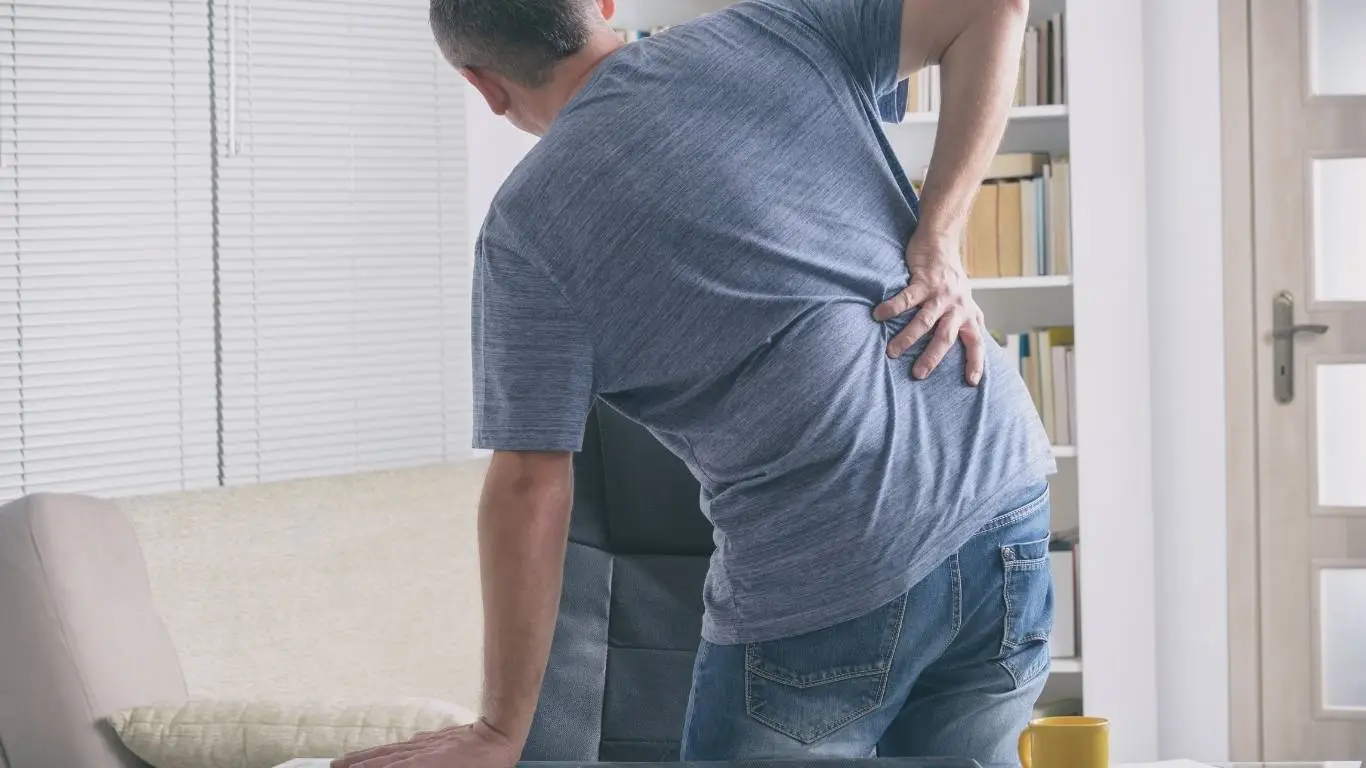Why Biofeedback Training for Back Pain Is a Game-Changing Relief
Back pain can sneak up on you at the worst times. I remember when I first started feeling that dull ache in my lower back—it wasn’t after lifting something heavy or from a sports injury. It came out of nowhere. And like many people, I brushed it off… until it became impossible to ignore. After trying the usual remedies—stretching, posture fixes, even physical therapy—someone recommended something I hadn’t considered before: biofeedback training. That’s when everything shifted.
What Is Biofeedback Training and Why Is It Effective for Back Pain?

Biofeedback is a technique that helps you gain control over involuntary bodily functions—like heart rate, muscle tension, and breathing—through real-time feedback. It uses sensors to monitor your physiological responses, then teaches you how to adjust them consciously. For back pain sufferers, this can be a game-changer.
Imagine being able to “see” how tight your muscles are and then relax them on command. That’s what biofeedback enables. It helps identify stress-related tension or poor muscular coordination contributing to back pain, especially in chronic cases.
According to National Library of Medicine, biofeedback has shown significant potential in reducing pain intensity, improving mobility, and reducing reliance on medication.
How It Works in Practice
During a typical session, sensors are placed on your skin—commonly around your lower back or shoulders. These sensors feed data to a monitor, showing visual or auditory cues. It might look like a graph of your muscle activity or a beeping tone that gets louder with tension. You then practice techniques like breathing exercises or guided imagery to bring those signals under control.
It might sound technical, but it’s surprisingly intuitive. I started noticing how often I was unknowingly clenching my back muscles—even while sitting at my desk. Just that awareness led to better posture and less pain within a few weeks.
Types of Biofeedback Used for Back Pain

- Electromyographic (EMG) Biofeedback: Focuses on muscle tension, great for identifying imbalances or overuse patterns.
- Thermal Biofeedback: Measures skin temperature, helping manage stress-induced pain via relaxation training.
- Respiratory Biofeedback: Helps regulate breathing, which can reduce physical and emotional tension contributing to pain.
- Heart Rate Variability (HRV): Teaches better autonomic regulation, which supports stress management and overall resilience.
EMG is the most commonly used form for back pain treatment. It gives a clear picture of muscular overactivation in the back, which is often overlooked in traditional treatments. For example, people with muscle imbalances causing back pain can benefit immensely from this targeted insight.
Benefits Beyond Just Pain Relief

What surprised me most was how biofeedback didn’t just ease my pain—it helped me feel more in control. Chronic pain often comes with a heavy emotional burden. Anxiety, frustration, and helplessness are common companions. Biofeedback breaks that cycle by giving you tools to directly influence what’s happening in your body.
Long-Term Physical and Mental Gains
- Improved posture and body awareness
- Better sleep due to reduced nighttime tension
- Reduced dependence on pain medications
- Lower levels of daily stress
- Improved emotional resilience
There’s also a strong mind-body connection that biofeedback taps into. A lot of people with persistent discomfort often overlook this. It’s no coincidence that chronic pain and emotional health are deeply linked, as explained in this guide on back pain and depression.
Who Should Consider Biofeedback for Back Pain?

This approach isn’t just for people with chronic, unmanageable pain. It’s effective across the spectrum—from occasional discomfort to post-surgical recovery or conditions like herniated discs and sciatica.
Here are a few profiles that could benefit most:
- Office workers with posture-related strain
- Athletes recovering from injury
- Older adults dealing with age-related back pain
- Postpartum women managing tension-related pain
- Anyone with stress-induced muscle tension
It’s even more effective when paired with lifestyle changes like exercise and ergonomic improvements. For a holistic approach, I found this section on lifestyle and natural remedies particularly useful.
If you’re someone who likes taking control of your own healing—this could be your tool. You’re not just masking the pain, you’re understanding and reprogramming your body’s response to it.
Where to Start with Biofeedback Therapy

You don’t need to dive into high-end clinical setups right away. There are at-home biofeedback devices available today, some of which integrate with mobile apps for guided support. But if you’re just beginning, working with a certified therapist ensures you’re targeting the right areas and interpreting the feedback correctly.
Look for a professional with experience in neuromuscular re-education or pain management. And if you’re combining biofeedback with other therapies—like movement or mindfulness—make sure your care team is coordinated. I found it helpful to also work on core stability exercises and ergonomics from this foundational guide on exercise, rehab, and ergonomics.
For a broader understanding of the condition and full range of treatments, I highly recommend checking the main back pain pillar page and this targeted resource on conservative treatments for back pain.
Real-World Experiences: What Biofeedback Looks Like in Everyday Life

Before trying biofeedback, I thought pain relief had to be passive—ice packs, heat pads, pain meds. But when I started training with biofeedback, everything shifted. One session had me watching a real-time chart of my back muscle activity. Every time I got tense, the line spiked. When I breathed deeply and consciously relaxed, it dipped. That visual reinforcement rewired how I carried my body, especially during high-stress moments at work.
It’s those small moments—when you’re slouched at your desk, clenching your jaw, or rushing through emails—that build chronic tension. Biofeedback doesn’t just treat back pain; it teaches you to notice those moments and change them. That’s why it’s been effective for people dealing with sports injuries, night-time back pain, and even post-activity flare-ups.
How Experts Use Biofeedback in Modern Pain Management

Biofeedback isn’t fringe science—it’s backed by clinical evidence and used in hospitals, sports clinics, and even VA centers. Some physical therapists combine biofeedback with core strengthening programs. Others use it during recovery from procedures like microdiscectomy or spinal fusion recovery.
According to pain specialists at Mayo Clinic, biofeedback is often recommended for chronic pain patients who don’t respond well to medication alone or who are looking for long-term, drug-free options. It’s also popular among those who want to improve their mind-body connection for stress-related conditions.
What’s refreshing is that biofeedback isn’t one-size-fits-all. Your experience might involve guided meditation paired with HRV tracking, or muscle retraining using EMG sensors. Some clinicians also incorporate it with cognitive-behavioral therapy—especially helpful when pain is linked to anxiety or past trauma.
Pairing Biofeedback with Other Pain Solutions

While biofeedback on its own is powerful, it gets even better when used alongside other proven approaches. Here’s how I integrated it with other daily strategies:
- Ergonomic Setup: Switched to a standing desk and lumbar support cushion (see standing desk benefits).
- Targeted Movement: Daily yoga stretches like cat-cow and pigeon pose helped reduce tension (yoga for back pain).
- Diet and Supplements: I started anti-inflammatory meals and added turmeric and omega-3s (anti-inflammatory diet).
- Mental Wellness: Used mindfulness and breath tracking apps alongside therapy for stress resilience.
This layered approach brought both physical and emotional relief. I wasn’t just “treating” pain anymore—I was reshaping how my body and brain responded to stress altogether.
Common Questions About Biofeedback for Back Pain

How long until you feel results?
Most people begin noticing a shift after 3–5 sessions. For me, it was subtle at first—more awareness than relief—but by week three, I felt the difference. Clinical guidelines suggest about 8–10 sessions for lasting results.
Is it covered by insurance?
It depends. Some insurance plans do cover biofeedback, especially when it’s recommended for chronic pain management or stress-related disorders. Check if your provider lists it under “neurotherapy” or “physical medicine.”
Can you do it at home?
Yes. There are wearable EMG devices, HRV monitors, and guided apps available for home use. If you’re dealing with something like morning back stiffness or recurring strain from posture, these can be incredibly helpful for daily tracking and training.
Any side effects or risks?
Biofeedback is considered very safe. The only “risk” is frustration if you expect instant results. It’s a skill, not a magic fix—it takes practice, like learning to ride a bike or meditate effectively.
When Biofeedback Might Not Be the Right Fit

Not every back pain case is ideal for biofeedback. If you’re dealing with structural issues like severe scoliosis, fractures, or tumors, this technique won’t fix the root cause. It can still support your healing process by lowering muscle tension and boosting emotional resilience—but it’s not a standalone solution for every condition.
That said, for many people, pain isn’t purely structural—it’s layered with tension, habits, inflammation, and stress. Biofeedback shines in those in-between zones where traditional treatments don’t offer a complete fix. If you’ve hit a plateau in physical therapy or you’re tired of cycling through painkillers, this might be your missing piece.
Choosing the Right Biofeedback Approach for You

The best place to begin is with an evaluation by a licensed biofeedback therapist—ideally someone trained in pain science or neuromuscular therapy. They can recommend the right sensor placement and training protocol based on your symptoms. If you’re more of a DIY person, start with an FDA-cleared at-home EMG device paired with an app that offers breathing or relaxation coaching.
Also, make sure your strategy fits your life. If you’re a long-haul driver, for example, choose portable tools that give feedback in real time. Check out tips for managing back pain while driving to see how pros do it on the road.
If your work involves sitting all day or standing in place, start combining short biofeedback sessions with changes to your setup. This could mean using a standing mat, lumbar support, or adjusting your screen height. Tools like these are covered in more depth here: ergonomics and back pain rehabilitation.
Bringing It All Together

If I could go back in time, I would’ve started biofeedback way earlier. It helped me not just relieve pain but reclaim a part of my life that I’d unconsciously adjusted around discomfort. No more shifting in my seat constantly. No more waking up stiff and achy.
Biofeedback is about learning to listen to your body in a deeper way—and that kind of awareness creates lasting change. Whether you’re recovering from disc issues or dealing with chronic stress pain, it’s one of the most empowering tools I’ve discovered.
For a comprehensive overview of other conservative, science-backed treatments that work hand-in-hand with biofeedback, you can explore the in-depth guide on conservative back pain treatments. And for a broader knowledge hub, don’t miss the full resource at Healthusias Back Pain Main Pillar.

Camellia Wulansari is a dedicated Medical Assistant at a local clinic and a passionate health writer at Healthusias.com. With years of hands-on experience in patient care and a deep interest in preventive medicine, she bridges the gap between clinical knowledge and accessible health information. Camellia specializes in writing about digestive health, chronic conditions like GERD and hypertension, respiratory issues, and autoimmune diseases, aiming to empower readers with practical, easy-to-understand insights. When she’s not assisting patients or writing, you’ll find her enjoying quiet mornings with coffee and a medical journal in hand—or jamming to her favorite metal band, Lamb of God.






